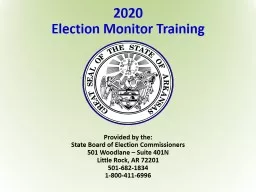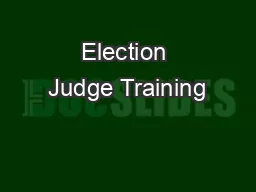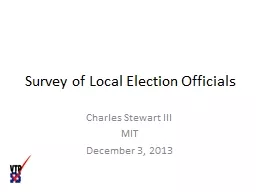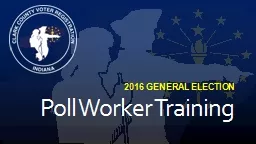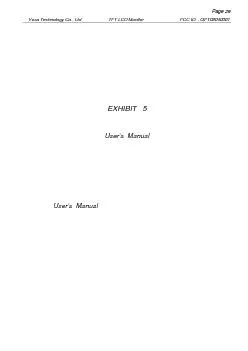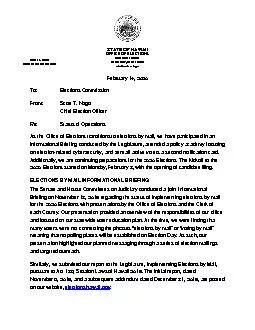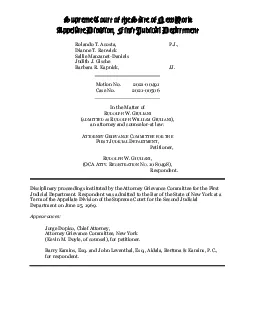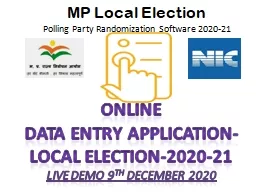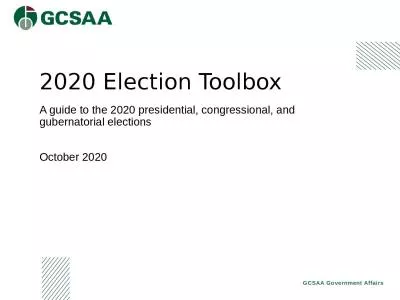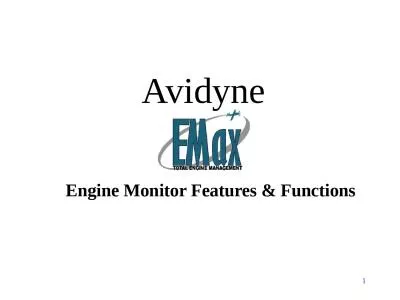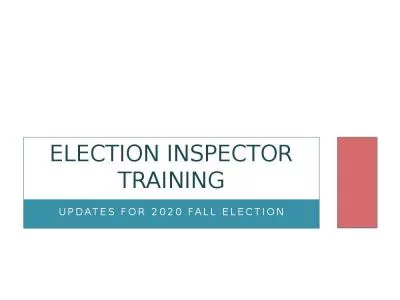PPT-2020 Election Monitor Training
Author : celsa-spraggs | Published Date : 2020-04-04
Provided by the State Board of Election Commissioners 501 Woodlane Suite 401N Little Rock AR 72201 5016821834 18004116996 Election Monitor Training 2 The State
Presentation Embed Code
Download Presentation
Download Presentation The PPT/PDF document " 2020 Election Monitor Training" is the property of its rightful owner. Permission is granted to download and print the materials on this website for personal, non-commercial use only, and to display it on your personal computer provided you do not modify the materials and that you retain all copyright notices contained in the materials. By downloading content from our website, you accept the terms of this agreement.
2020 Election Monitor Training: Transcript
Download Rules Of Document
" 2020 Election Monitor Training"The content belongs to its owner. You may download and print it for personal use, without modification, and keep all copyright notices. By downloading, you agree to these terms.
Related Documents

